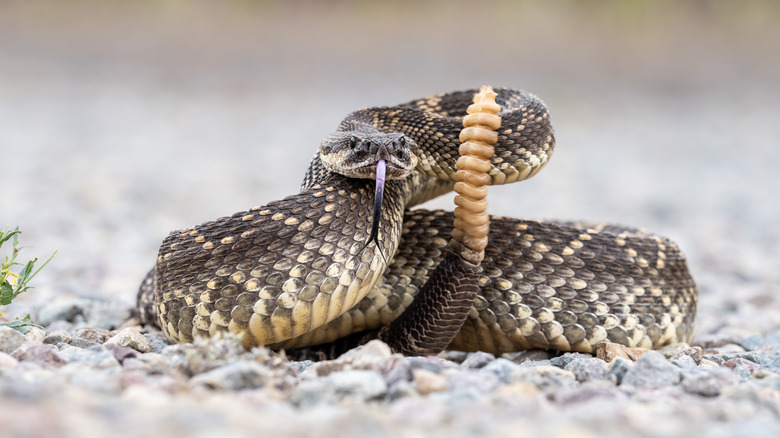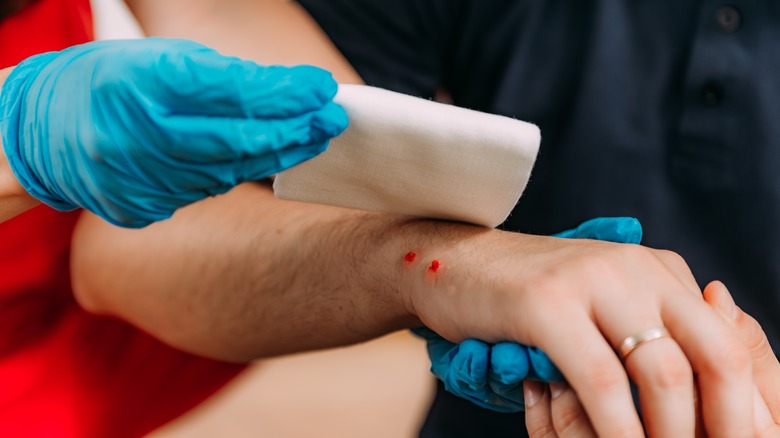What To Do If You Get Bitten By A Venomous Snake While Adventuring Outdoors?
There are many types of venomous snakes around the world, and some are more dangerous than others. Luckily, in North America, we don't have to deal with as many venomous snakes as other places (looking at you, Australia); however, that's not to say that we don't have any venomous snakes at all. In the U.S., there are three main venomous snakes to worry about: rattlesnakes, copperheads, and cottonmouths, and different versions of these three can be found in pretty much every state except Maine, Hawaii, and Alaska. North America is also home to venomous coral snakes that live in the Southeast and Southwest. According to the CDC, about 7,000 to 8,000 people suffer venomous snake bites in the U.S. per year. Fortunately, only about five of those bites are fatal.
To find out more about what to do if you are ever bitten by a venomous snake, Outdoor Guide spoke exclusively to Jay Brewer, founder of The Reptile Zoo and host of "Reptile Royalty" on The Roku Channel. According to Brewer, after getting bitten by a snake, "First of all, you might want to identify it. If you have a cell phone, take a photo. Don't grab it, obviously, because you're going to get bit again. The best thing to do is stay calm and get some help." Taking a photo of the snake is important because having a picture can help medical professionals more quickly figure out what type of venom they need to treat and better care for your wound.
The snake was probably venomous, now what?
So, you have your picture and figured out that the snake was likely venomous, but now what should you do? First of all, it is important not to panic. Even if the snake that bit you was venomous, there is a possibility that it was just a dry bite. A dry bite happens when a snake bites its target but chooses not to inject any venom. According to Brewer, "You'll know whether you got a [venomous] bite or not in about 15 minutes because your body will start to tingle. And it's not a very fun experience, I can tell you that." If you realize venom was released, remember to never try to suck the venom out of a snakebite – that can make it worse.
Your priority is getting medical treatment as soon as possible. This is important because the 15-minute rule isn't always 100% accurate and, as Brewer explained, the time it takes for the effects of venom to truly set in can vary greatly depending on "how much venom" was injected by the snake and "where it bit you." If you are deep into a hike and can't get to civilization quickly, call 911 for help if you have cell service.
To learn more about reptiles from Jay Brewer and his team, watch Season 2 of "Reptile Royalty," now streaming on The Roku Channel.

